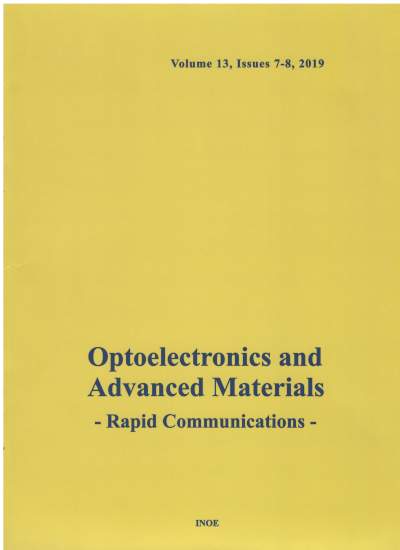Abstract
Using the technique of capturing the evanescent light leaking image, named recently Differential Evanescent Light Intensity
(DELI), which yields information about the photodeposited nanostructures in the deposited zone we evaluated the
morphology of ultra-thin a-Se photodeposited nano-structures deposited directly on glass substrates serving as waveguides
by high intensity Xenon irradiation lamp in the visible spectrum. Deposition fluences of about 2 F ≈ 300J / cm were enough
to produce layers up to about 170nm thickness, similar to values needed for CW Ar+
ion laser PD deposition at λ = 498 nm
reported in previous investigations. The deposited particles observed on the substrates have diameters typically in the range
of 100-300 nm as obtained by other microscopy methods. The morphology of the nano-structures observed by DELI during
this work conditions consist of a random array of individual particles adsorbed onto the surface. The deposited material
morphological profile was observed for fluences in excess of F > Fth ~ 25 J/cm2
for the particular experimental conditions of
this work for a-Se. The highest merits found for the DELI technique are the fast and ease of measurements, better z�resolution than SEM and capability of large areas profiling and mean thickness measurements.
Keywords
Nanometer layers, Pulsed Laser Photodeposition, Evanescent field.
Citation
S. AARONOV, E. GANON, P. OKHMAN, N. MIRCHIN, S. A. POPESCU, I. LAPSKER, A. PELED, Differential evanescent light intensity evaluation of a-Se nanostructure, Optoelectronics and Advanced Materials - Rapid Communications, 2, 10, October 2008, pp.614-617 (2008).
Submitted at: July 31, 2008
Accepted at: Oct. 2, 2008
